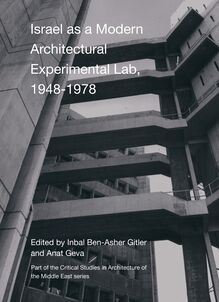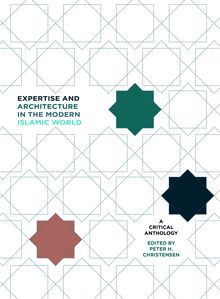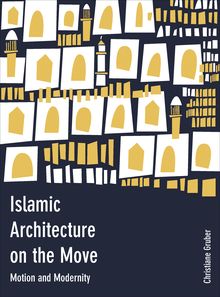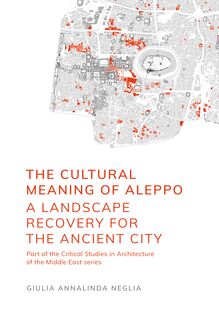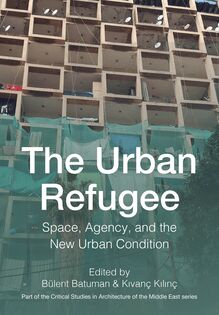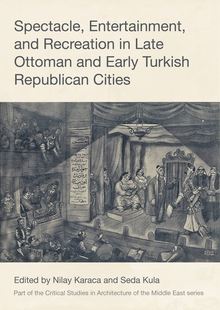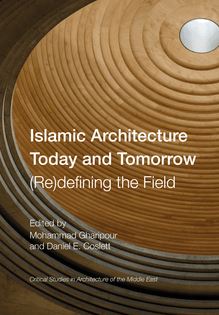-
 Univers
Univers
-
 Ebooks
Ebooks
-
 Livres audio
Livres audio
-
 Presse
Presse
-
 Podcasts
Podcasts
-
 BD
BD
-
 Documents
Documents
-
- Cours
- Révisions
- Ressources pédagogiques
- Sciences de l’éducation
- Manuels scolaires
- Langues
- Travaux de classe
- Annales de BEP
- Etudes supérieures
- Maternelle et primaire
- Fiches de lecture
- Orientation scolaire
- Méthodologie
- Corrigés de devoir
- Annales d’examens et concours
- Annales du bac
- Annales du brevet
- Rapports de stage
La lecture à portée de main
Vous pourrez modifier la taille du texte de cet ouvrage
Découvre YouScribe en t'inscrivant gratuitement
Je m'inscrisDécouvre YouScribe en t'inscrivant gratuitement
Je m'inscrisEn savoir plus
Vous pourrez modifier la taille du texte de cet ouvrage
En savoir plus

Description
This volume considers the major trends and developments in Iranian architecture during the 1960s and 70s in order to further our understanding of the underpinnings and intentions of Persian architecture during this period. While narrative explorations of modernism have relied heavily upon classifications based on western experiences and influences, this book provides a more holistic view of the development of Persian architecture by studying both the internal and external forces that influenced it in the late twentieth century. The chapters compiled in Architectural Dynamics in Pre-Revolutionary Iran, accompanied by more than eighty images, shed light on the fascinating — and sometimes controversial — evolution of Iranian architecture and its constant quest for a new paradigm of cultural identity.
Preface
Acknowledgments
Part One: Vernacular Integrated with Modernism
Chapter 1: A Personal Reflection: On the Traditional, the Modern and the Perennial in Iranian Architecture – Nader Ardalan
Chapter 2: Making Architecture Modern: A History of Globalization in Iran’s Architecture Profession – Shawhin Roudbari
Chapter 3: Passages and Malls in Translation: Class, Culture, and Design in the Commercial Architecture of Pahlavi Iran – Farshid Emami
Part Two: Modernism Imported, Vernacular Eclipsed
Chapter 4: Building Cities for Tomorrow: The US Point Four Program and Discourse of Urban Planning in Iran – Sahar Hosseini
Chapter 5: The Israeli Plan for Rebuilding the Rural Region of Qazvin – Neta Feniger and Rachel Kallus
Chapter 6: Philip Johnson’s Design at Group Apartments in Isfahan: From a Dispute Between Tradition and Modernity to a Dialogue – Mehdi Azizkhani
Chapter 7: Paradise by Design: Pardisan Park in Tehran – Kathleen John-Alder
Sujets
Informations
| Publié par | Intellect Books |
| Date de parution | 15 octobre 2019 |
| Nombre de lectures | 0 |
| EAN13 | 9781789380590 |
| Langue | English |
| Poids de l'ouvrage | 6 Mo |
Informations légales : prix de location à la page 0,4150€. Cette information est donnée uniquement à titre indicatif conformément à la législation en vigueur.
Extrait
Islamic Architecture on the Move is the first book in the series Critical Studies in Architecture of the Middle East . The series is edited by Mohammad Gharipour (Morgan State University, Baltimore) and Christiane Gruber (University of Michigan, Ann Arbor).
Critical Studies in Architecture of the Middle East is devoted to the most recent scholarship concerning historic and contemporary architecture, landscape and urban design of the Middle East and of regions shaped by diasporic communities more globally. We invite interdisciplinary studies from diverse perspectives that address the visual characteristics of the built environment, ranging from architectural case studies to urban analysis.
First published in the UK in 2019 by
Intellect, The Mill, Parnall Road, Fishponds, Bristol, BS16 3JG, UK
First published in the USA in 2019 by.
Intellect, The University of Chicago Press, 1427 E. 60th Street,
Chicago, IL 60637, USA
Copyright © 2019 Intellect Ltd
All rights reserved. No part of this publication may be reproduced, stored in a retrieval system, or transmitted, in any form or by any means, electronic, mechanical, photocopying, recording, or otherwise, without written permission.
A catalogue record for this book is available from the British Library.
Series: Part of the Critical Studies in Architecture of the Middle East series
Series editors: Mohammad Gharipour and Christiane Gruber
Copy editor: Henry Johnson
Cover designer: Cristina Murphy and Aleksandra Szumlas
Cover image: Tehran Museum of Contemporary Art
(Courtesy of Ministry of HUD)
Production editor: Faith Newcombe
Typesetting: Contentra Technologies
Print ISBN: 978-1-78938-058-3
ePDF ISBN: 978-1-78938-063-7
ePub ISBN: 978-1-78938-059-0
Series ISSN: 2059-3562
Printed and bound by Gomer, UK.
This work is licensed under the Creative Commons Attribution Non Commercial No Derivatives (CC BY-NC-ND) Licence. To view a copy of the licence, visit https://creativecommons.org/licenses/by-nc-nd/4.0/
Contents
Preface
Acknowledgements
Part 1: Vernacular Integrated with Modernism
Chapter 1: A Personal Reflection: On the Traditional, the Modern, and the Perennial in Iranian Architecture
Nader Ardalan
Chapter 2: Making Architecture Modern: A History of Globalization in Iran’s Architecture Profession
Shawhin Roudbari
Chapter 3: Passages and Malls in Translation: Commercial Architecture in Pahlavi Iran
Farshid Emami
Part 2: Modernism Imported, Vernacular Eclipsed
Chapter 4: Building Cities for Tomorrow: The US Point Four Program and Discourse of Urban Planning in Iran
Sahar Hosseini
Chapter 5: The Israeli Plan for Rebuilding the Rural Region of Qazvin
Neta Feniger and Rachel Kallus
Chapter 6: Philip Johnson’s Design at Group Apartments in Isfahan: From a Dispute Between Tradition and Modernity to a Dialogue
Mehdi Azizkhani
Chapter 7: Paradise by Design: Pardisan Park in Tehran
Kathleen John-Alder
Biographies
Index
Preface
Mohammad Gharipour
The Architecture of the Pahlavid Period in the 1960s and 1970s
The Pahlavid period (1925–79) of Iranian history is one of rapid change and progress – especially in contrast to the preceding Qajar dynasty (1785–1925), which historians typically characterize as incompetent and weak. The driving force behind Iran’s modernization during this period was the Pahlavid king Reza Shah, who ruled from December 15, 1925, until he was forced to abdicate on September 16, 1941, by Allied Powers. He cuts a highly controversial figure, even today. On the one hand, he established a largely totalitarian regime that diminished the role of parliament and suppressed journalists and activists seeking a greater role for self-determination in the country’s social and political life. On the other, he was steadfastly committed to reversing centuries of Qajar corruption, ineptitude, and backwardness by establishing new public institutions, including modern judiciary and educational systems – the University of Tehran being one example of his legacy – and by building clinics and hospitals across the country, thereby improving public health standards. He also formed an organized army, founded museums, and built roads, railroads, and bridges. While historians often marvel at the breadth of such transformation in so short of time, his critics, both then and now, condemn his authoritarian agenda and top-down approach towards overturning longstanding socio-cultural norms. His social reforms included banning the hijab , limiting the power of clerics – whom he saw as enemies of modernity – and requiring males to dress in western attire, as he considered traditional garb a symbol of ignorance.
After Reza Shah’s abdication in 1941, his son Mohammad Reza Shah reigned until the Islamic revolution on February 11, 1979. The new Shah was determined to continue his deposed father’s ambitious and heavy-handed modernization efforts – notwithstanding heavy domestic and foreign opposition. Mohammad Reza Shah staged a major coup against his political enemies, particularly aimed at removing Prime Minister Mohammad Mosaddegh. His new totalitarian regime established strategic relations with religious clerics, while diminishing the role of the prime minster and democratic organizations such as the parliament.
Spanning nearly four decades, the reign of Mohammad Reza Shah can be divided into three eras. The first period began with the young king’s coronation in 1941 and extended to the coup d’état of 1953. The coup initiated a second era, one of targeted economic and social reforms known as the White Revolution (1963), which some saw as a bid to contain the appeal of communism. The third era commenced with the sudden and precipitous rise in oil revenue in the 1970s, prompting the king to accelerate a range of cultural and development programs. Central to the Shah’s remarkable legacy were architectural achievements.
The economic revolution of the 1960s, spurred on by the White Revolution, sought to empower farmers and peasants by distributing lands that had long been concentrated in the hands of wealthy feudal lords. This populist measure was partially a response to the rising interest in communism and, as such, members of different social strata viewed it quite differently from one another. Moreover, while its main goals – to stimulate agricultural production, reduce poverty, and distribute wealth and economic opportunities to the lower classes – were generally viewed as laudable, the reform programme did not play out as envisioned. For example, tenant farmers who were given ownership of the land did not have sufficient resources (e.g., water, agricultural tools, and farming equipment) to maximize the potential output of these farms. While these reforms had positive impacts in some regions, they actually increased poverty rates in other rural areas. Meanwhile, a rising class of wealthy villagers started emigrating to urban areas in order to spend their new wealth and pursue other dreams. Indeed, the rise of national TV and its availability to the nouveau riche showcased cities, and especially Tehran, as manifestations of national hope and ambition. But the increasing level of unemployment in rural areas accelerated mass migrations into major metropolitan areas, creating a range of unanticipated social issues and conflict.
Oil revenue was also spent on creating new industries in order to provide goods and services for a growing middle class. And what could not be produced in country was imported from abroad, further promoting consumerism. By propping up new industries and factories and buying new technologies and weapons from the US, properties in high-demand areas (e.g., New York and London), and shares in multinational companies (e.g., Mercedes Benz), the government was able to improve the country’s economic stability, and ultimately, make Iran a regional economic power. These efforts aligned with moves outside Iran that promulgated the image of the country as a new regional and international power.
This era is also marked by significant social changes, some of which had their genesis during Reza Shah’s reign. The government created a national public health programme for the entire country (extending even to its remote areas), established an organization ( Sepah-e Danesh ) to educate youth and increase literacy in under-served regions, and started initiatives to educate and empower women. As historians of architecture recognize, during the 1960s and 1970s, the government’s decentralization plan resulted in several major master planning projects and construction initiatives outside Tehran – although the spatial politics embedded in administrative planning emphasized the development of the capital.
Despite the inevitable internal crises, the government of the Shah brought stability to Iran and to the region, cementing his role as a regional leader. Some observers even viewed him as the policeman of the Middle East. While Iran’s improved relations with the West opened the door to foreign investment, its expanded international relations – and particularly with Israel – were highly criticized by some people who viewed Iran’s development as coming at the expense of longstanding Islamic values. Meanwhile, corruption within the administration and repression by SAVAK (Organization of National Intelligence and Security) created growing public dissent. A somewhat exaggerated narrative of the situation was disseminated by leftists, clerics, and religious intellectuals (e.g., Ali Shari’ati, Mehdi Bazargan) who openly criticized the Shah for his totalitarian agenda and social reforms, which they believed marginalized the poor and subverted their religious beliefs. Although to a certain extent distorted, these views gradually spread throughout the country, initiating a social movement that eventually snowballed into the Islamic Revolution of 1979.
These social and cultural reforms also triggered major developments in urban planning,
-
 Univers
Univers
-
 Ebooks
Ebooks
-
 Livres audio
Livres audio
-
 Presse
Presse
-
 Podcasts
Podcasts
-
 BD
BD
-
 Documents
Documents
-
Jeunesse
-
Littérature
-
Ressources professionnelles
-
Santé et bien-être
-
Savoirs
-
Education
-
Loisirs et hobbies
-
Art, musique et cinéma
-
Actualité et débat de société
-
Jeunesse
-
Littérature
-
Ressources professionnelles
-
Santé et bien-être
-
Savoirs
-
Education
-
Loisirs et hobbies
-
Art, musique et cinéma
-
Actualité et débat de société
-
Actualités
-
Lifestyle
-
Presse jeunesse
-
Presse professionnelle
-
Pratique
-
Presse sportive
-
Presse internationale
-
Culture & Médias
-
Action et Aventures
-
Science-fiction et Fantasy
-
Société
-
Jeunesse
-
Littérature
-
Ressources professionnelles
-
Santé et bien-être
-
Savoirs
-
Education
-
Loisirs et hobbies
-
Art, musique et cinéma
-
Actualité et débat de société
- Cours
- Révisions
- Ressources pédagogiques
- Sciences de l’éducation
- Manuels scolaires
- Langues
- Travaux de classe
- Annales de BEP
- Etudes supérieures
- Maternelle et primaire
- Fiches de lecture
- Orientation scolaire
- Méthodologie
- Corrigés de devoir
- Annales d’examens et concours
- Annales du bac
- Annales du brevet
- Rapports de stage
